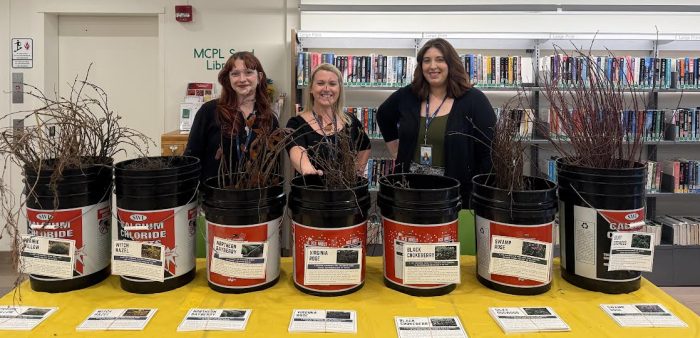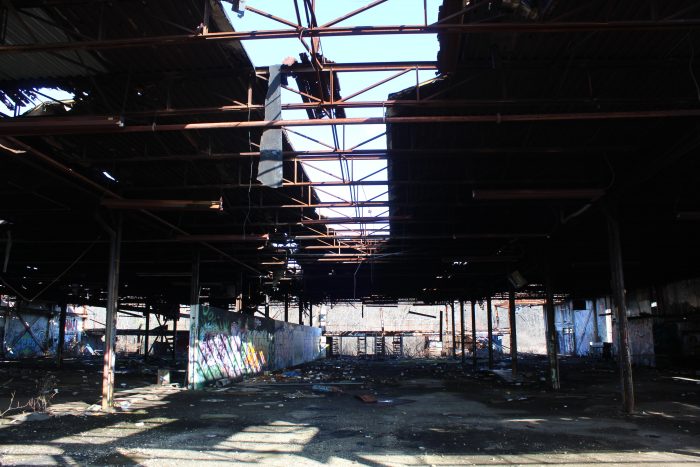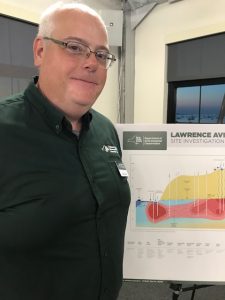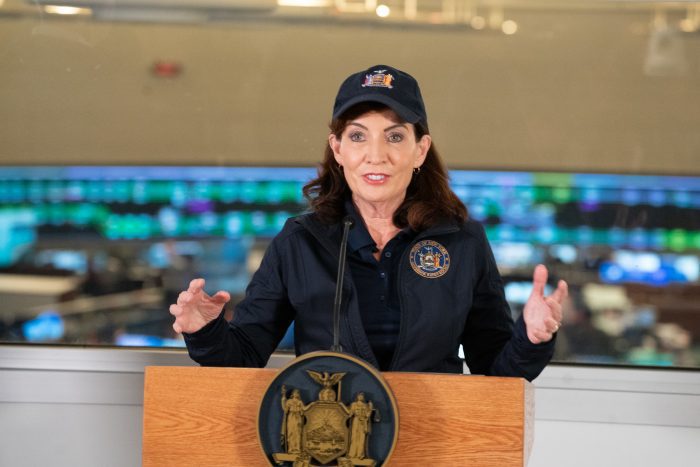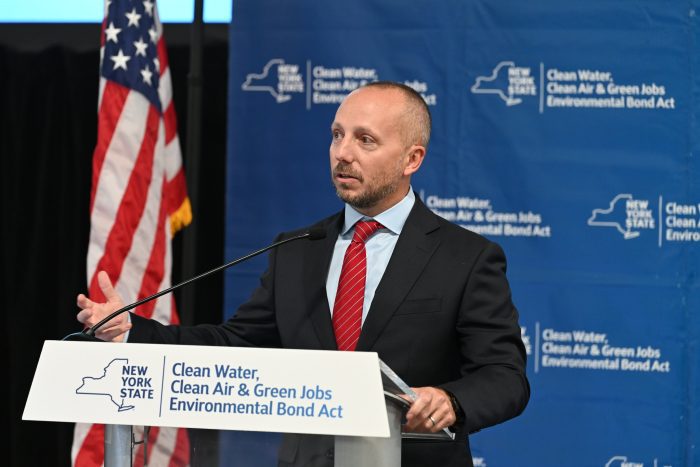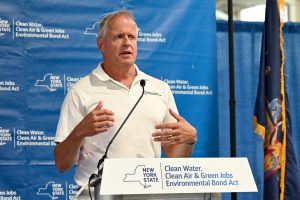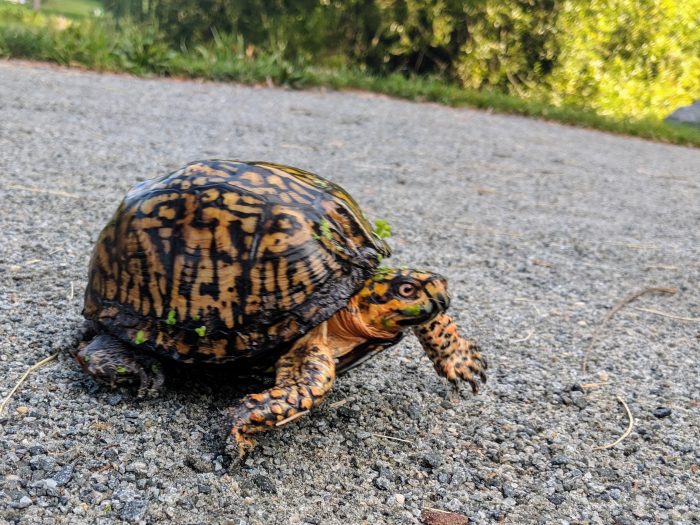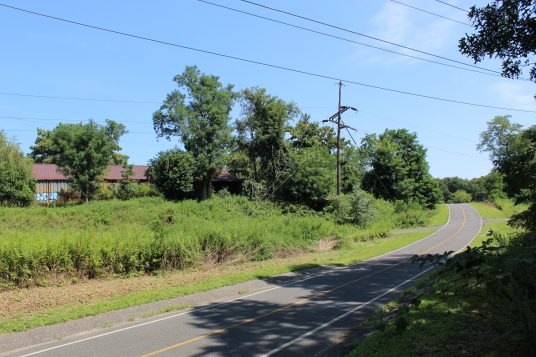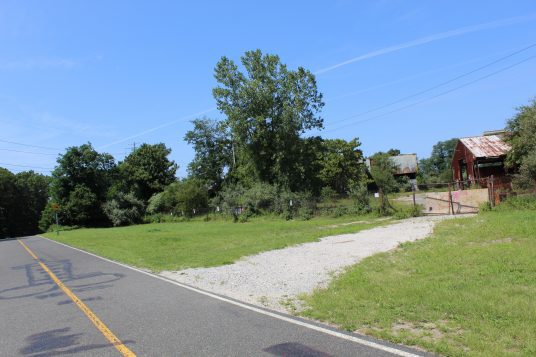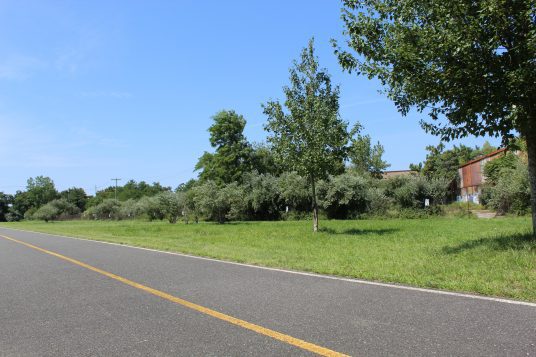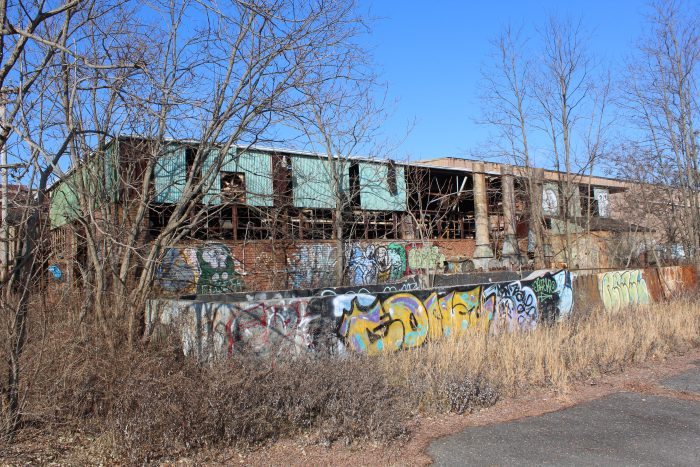Through the years, there have been scattered reports of the Eastern box turtle, a native species to Long Island, seen along the Setauket-Port Jefferson Greenway Trail, particularly at a 1/8-mile strip adjacent to the Lawrence Aviation Superfund site.
Though not listed as an endangered species under the federal Endangered Species Act, the New York State Department of Environmental Conservation considers the box turtle of “special concern,” a classification for native species that “warrants attention and consideration but current information, collected by the department, does not justify listing these species as either endangered or threatened.”
The New York State Department of Transportation, charged with mowing the Greenway three times per year, was alerted to the turtle presence earlier this summer by the Three Village Community Trust, the local organization supervising and stewarding the trail.
“We became aware that there were some turtles apparently in the area in and around the Lawrence Aviation site,” said Herb Mones, TVCT president. “As a result, we requested that the state, when it does its mowing program, not mow that section or that area.”
The Friends of the Greenway is a subsidiary of TVCT that works to maintain and upkeep the trail grounds. Charlie McAteer, the organization’s chair, held that the mowing operation does fulfill a public end, limiting tall grasses, which can often yield ticks.
“If the tall grass is right next to the paving, people worry about ticks as they go past,” McAteer said in an email. “So these few mowings do help with our human satisfaction.”
But, he added that the organization strives to keep “mowing to a minimum so meadow growth and places for turtles [and other wildlife] can flourish again and trail users can see and enjoy nature along the trail.”
Joshua Heller, public information specialist for NYSDOT, indicated that the department was made aware of the presence of turtles and halted mowing for the area in question.
“The New York State Department of Transportation prides itself on being good stewards of the environment,” Heller said in a statement. “We have received the Three Village Community Trust’s letter and are reviewing it. In the meantime, we have temporarily halted mowing operations in this area.”
Aug. 22 walkthrough
A walk along the Greenway Tuesday, Aug. 22, painted a different picture.
Outside the Lawrence Aviation property, there was evidence of fresh mowing. However, there was no evidence of harm to wildlife observed during the walkthrough.
Presented the photos of the recent mowing activities, Mones expressed possible miscommunication.
“It’s unfortunate that the NYSDOT extended their mowing beyond the area we recommended to them,” the TVCT president said in an email. “In the past, the DOT has been responsive to our requests and recommendations. It’s obvious we’ll need to do more work to create a ‘protective zone’ in the future.”
NYSDOT did respond to a follow-up request for comment on the matter by clarifying that the recent mowing occurred prior to temporarily halting mowing in the area.
Possible solutions
A 2017 thesis paper by Margarete Walden explores the danger mowing activities pose to box turtles.
To mitigate the potential risk of turtle mortality due to mowing, Walden suggests conducting “mowing activities [from] November to March, so as to coincide with the period of turtle hibernation,” during which they live underground. It is, however, difficult to mow during these months when there is heavy snowfall.
McAteer pledged that the Friends of the Greenway “will work with NYSDOT to try to work on the mowing distance/guidelines” for routine mowings.
For Mones, wildlife conservation and trail maintenance are not mutually exclusive. Rather, he indicated that both efforts could serve the coinciding interests of trail users and wildlife.
“Our motto is, ‘Protecting the places we love,’” Mones said. “We are the stewards of the Greenway, but we also have the residual responsibility to protect the open space and advance environmental protection.”

